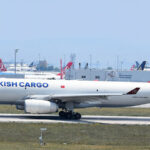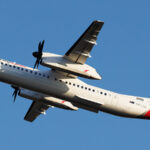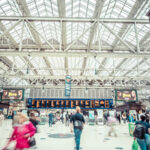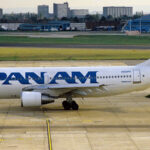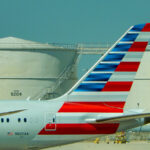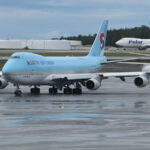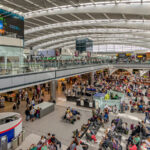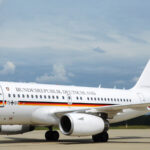The bright-red cable tram swung high above downtown Zacatecas, whisking us between twin hills that hem the colonial silver-mining city into a narrow valley. As the tram reached the halfway point, the cabin jolted suddenly. All conversation died, nervous glances were exchanged.
Estivan, our pint-sized and underage attendant, broke the silence. “We dropped a cable car last month,” he said with a wry grin.
Mark, the most fluent member of our small group of travelers, translated. We chuckled–uneasily. There was really little cause for worry. The Swiss-made cable system was recently installed and quickly adopted as an up-to-date symbol of the city. The incongruity of a ski lift in a city founded by sandaled missionaries, conquistadors, and brutal silver barons is hard to shake, but the views can’t be beat.
We soared over the old city’s rooftops and medieval-like layout of narrow, twisting side streets, some so steep they revert to stairs. Courtyards otherwise hidden from prying eyes behind heavy wooden gates revealed secret gardens spilling with magenta bougainvillea and equally gaudy collections of luxury automobiles. The small cable car tilted ever so slightly to the right as all eight occupants shifted positions to gawk at the city’s landmarks.
Dead center were the ornate spires and massive dome of Catedral de Zacatecas, the city’s cathedral, regarded as one of Mexico’s finest. Downhill and in the distance, I could make out the rounded outer wall of the former San Pedro Bullring, now imaginatively reconceived as a luxury hotel. On Cerro del Grillo, the mouth to Eden Mine, source of much of Zacatecas’s immense silver wealth and starting point for a thrilling tour into the heart of the mountain, gaped. From on high, Zacatecas (pronounced sah-cah-TAY-cus) might easily pass for Italy’s hilltop beauty, Siena. That perception carries through at street level. Zacatecas’ downtown of cobblestoned avenues and stately buildings from the 16th and 17th centuries–the colonial period of Nueva Espana–oozes old-world charm.
Only instead of the warm, yellow-brown color synonymous with Siena, Zacatecas is bathed in dusky rose. Most every notable building is constructed of cantera, a locally quarried stone said to come in 12 shades of pink, ranging from baby blush to salmon. In the high-altitude sunlight, the stone takes on a luminous, almost playful, quality. At sunrise and sunset, taller buildings blaze in the urban equivalent of alpenglow.
While steeped in history, Zacatecas, a small city of 300,000, is a bustling state capital and university town of the modern world. Situated at 8,100 feet in Mexico’s arid central highlands, the city enjoys a mild, dry climate year-round. This is cattle country, and ranchers in cowboy hats and boots are a common sight. So are European tourists, who long ago discovered the city and tend to arrive in force around Christmas and September during festival season. The city is also a popular destination with Mexico’s growing middle class. Noticeably absent are North Americans. Their tours of the colonial cities in the central highlands usually begin and end at Guadalajara and San Miguel de Allende, both at least a four-hour drive to the south. For Norte Americanos, Zacatecas remains off of the beaten path.
The story of Zacatecas begins with Spain’s lust for silver. When a Zacateco presented prospector Juan Tolosa with a clump of shiny ore in 1546, the friendly gesture ignited a silver rush. Fortune seekers flocked to the banks of the Arroyo de la Plata, followed by missionaries from the Benedictine, Dominican, Franciscan, and Jesuit orders of the Roman Catholic church. Zacatecas was soon producing one-fifth of the world’s silver and spreading Catholicism into the forbidding northern deserts as far as present-day Arizona and New Mexico. Spain claimed most of Zacatecas’ mineral wealth, but enough remained behind to spur a building boom of magnificent churches and pleasure palaces worthy of local silver barons.
The ultimate expression of the city’s religious and mining prominence took form in Catedral de Zacatecas. Built between 1718–1732 on the principle that nothing succeeds like excess, the pink-stoned edifice is an over-the-top example of Mexico’s Baroque style. On the main facade, not a square inch of pink cantera stone escaped the sculptor’s chisel. What at first appears to be a chaotic swirl of geometric carvings and festooned columns, on closer study reveals a studied order. Life-sized sculptures of Jesus and the 12 apostles occupy alcoves on the facade’s three tiers. In a nod to Aztec culture, the entire design pivots around a sun-shaped stained-glass window that substitutes for a rose window typical of European cathedrals.
If you tour the cathedral in the morning, you may encounter the honey-water man. He walks the streets selling aguamiel, or unfermented mescal, which he pours from corked jugs carried by his donkey. The sweet drink is said to be good for the kidneys. Mine have worked well since I downed a glassful.
Linger in front of the cathedral a bit longer, and you’ll inevitably meet another fixture of Zacatecas’ street scene, Don Rafa Vera. You’ll know him by his deep baritone voice and pushcart piled with warm-from-the-oven galletas, or cookies. During my stay in Zacatecas, I would run into Vera on four separate occasions. He bakes one and only one variety of galleta, a perfect blending of flour, butter, eggs, sugar, and cinnamon. It’s an addictive confection. Lured by free samples, my travel companions and I were soon buying bags of galletas, then later scouring town for another fix from Vera.
Vera’s real gift is for gab. In passable English, he tells us that he was a nightclub crooner and lived for a period in San Francisco. One of his sons still lives in that city’s Chinatown, and he visits occasionally. “San Francisco is too busy, always go, go. I am happy when I return to Zacatecas,” he said.
Zacatecas’ charm is in part due to its human scale. A good pair of shoes and relaxed pace (the elevation here exceeds many American ski towns) puts all of the city’s highlights within easy walking distance. Accustomed as I am to small cities in the United States, which function as parking lots by day and are all but deserted at night, the swirl of street life in Zacatecas was a revelation.
During the day, crowds surge through the open-air market at Callejon de Trafico, where stalls are piled with tunas, the fruit of the prickly pear, and Mexican-made shoes. In the early evening, families gather at Francisco Goitia Plaza to watch clowns or listen to La Tambora, a booming brass and drum band. At night, couples stroll past the old aqueduct and the many churches and significant public buildings, each beautifully and expertly illuminated. One evening, everyone in town turned out for the unveiling of the new jet fountain in Enrique Estrada Park. As spouts and curtains of water danced and changed colors to Vangelis’ “Chariots of Fire” theme song and other contemporary standards, kids squealed while moms, dads, teens, and grandparents clapped.
For lovers of fine and folk art, a wide array of museums makes Zacatecas a cultural oasis. Before lunch and a siesta, we planned a visit to the Manuel Felguerez Museum of Abstract Art, a short stroll away on Avenida Hidalgo, the city’s main street. Along the way, we passed the lovely Plaza de Armas, which is surrounded by state government offices housed in former palaces. Intricate wrought iron decorates the balconies and doorways. Uniformed doormen stood at attention in front of the venerable Hotel Emporio. On the avenue, distinguished society women darted into the many silver shops, and fashion victims clutched shopping bags bearing the names of chic boutiques.
Museo Manuel Felguérez is the modern art museum for people like me who don’t otherwise enjoy modern art. Housed in a former seminary and one-time prison, the museum holds a collection of immensely appealing paintings and sculptures by Manuel Felguérez and many other Mexican and foreign artists. Worth the price of admission alone is the hall exhibiting 11 murals commissioned for the Mexican Pavilion at the 1970 World’s Fair in Osaka, Japan. Many of the works measure at least 30 feet high by 20 feet wide and create a stir much as they did 35 years ago. I found myself riveted by Francisco Corzas’s Incomunicacion I, with its brooding Don Quixote; cow skulls; and arid, red landscape.
Art and colonial-era architecture also mix at the Museo Pedro Coronel, which showcases works by Pablo Picasso, Salvador Dali, Joan Miro, and Francisco Goya (his series of bullfighting sketches are a highlight) in a 17th-century Jesuit school; Museo Rafael Coronel, featuring thousands of ceremonial masks from all parts of Mexico amid the ruins of a 17th-century convent; and Museo Goitia, which displays the works of local artists in an elegant French-style former governor’s residence. Several days spent merely taking in the city’s artistic treasures would be time well spent.
That afternoon we attended Las Morismas de Bracho, a reenactment of the battle for Granada, in which the Christians expelled the Moors from Spain. The pageant is held every August on the outskirts of town on the site where Pope John Paul II performed Mass in 1990. Among the festivals celebrated in town–September’s bullfights included–Las Morismas de Bracho is the quirkiest and most bloodthirsty.
In the days leading up to the climactic battle, the armies take to the streets, marching beneath colorful banners and trailed by small yet noisy cannons. As many as 5,000 men, bearded ladies, and kids from across the region participate. The streets echo with the Spanish battle song “Fast Forward,” played ad nauseam by drum and bugle corps.
The Christian army dresses in long, black beards, tall top hats bearing a gold cross, and black leather aprons. As it was explained to me, the aprons were intended to prevent the blood of infidels from besmirching its wearer. (We’re only pretending, right guys?) The Moors march in baggy, red pants; turbans with red, feathery plumes; and improvised backpacks decked with onions, carrots, bottles of mescal, and loaves of bread. When the Cristianos storm the Moors in the field of battle, the roar of dummy rifles is deafening and the pall of smoke clouds the sun.
That night after a delicious dinner of enchiladas Zacatecana, a local favorite stuffed with chicken and smothered in cream and avacados, we were prepared to call it a day. Walking back to our hotel, we heard the sound of guitars and trumpets and joyful conversation coming from the Alameda. In the palm-fringed park, a troupe of callejoneadas, or street musicians, was playing “Barreteros,” an anthem of sorts for one of the city’s ancient neighborhoods. Couples of all ages shuffled and two-stepped along. Someone poured mescal into the cups dangling from everyone’s neck by a string. These roving street parties are a fixture in Zacatecan life. Even on a Wednesday night. Home is going to seem colorless by comparison.
Jim Gorman is a writer who lives in Melrose Park, Pennsylvania.
Destination Details
Getting There: Aero Mexico flies direct to Zacatecas from Los Angeles, Chicago, and Houston. From Mexico City, Aero Mexico flies to Zacatecas several times a day.
What To See: El Eden Mine is open from 10 a.m.–6 p.m. daily. Tours ($2.25) depart every 15 minutes. The more convenient of its two entrances is located near the Teleferico on Avenida del Grillo.
The Teleferico runs from 10 a.m.–6 p.m. daily. The trip across to Cerro de la Bufa takes seven minutes and costs $2.25.
Catedral de Zacatecas is located on Avenida Hidalgo at the heart of town. While in the neighborhood, see the two-story mural in the center stairwell at Palacio de Gobierno, which vividly depicts the lengthy span of Zacatecas’ history.
Museo Manuel Felguerez ($2.25 admission) is open from 10 a.m.–5 p.m. Wednesday through Monday. It is located at the corner of Colon and Seminario.
Museo Rafael Coronel ($2.25 admission) is located at the corner of Abasolo and Matamoros at the north end of town. It is open every day except Wednesday, from 10 a.m.–5 p.m.
Where to Eat: Gorditas Dona Julia serves an inexpensive lunch of small, freshly made tortillas piled with your choice of chicken; shredded beef; or, for the more adventurous, cactus, tongue, or blood sausage. Located at 409 Avenida Hidalgo.
Los Dorado de Villa specializes in pazole and enchiladas. Parakeets and parrots inhabit the washroom, and a funky assortment of crucifixes and colorful papelle picano, or paper cutouts, liven the decor. Located at 1314 Plazuela de Garcia.
Hotel Emporio features the best Sunday buffet in town. Every month the menu shifts to spotlight the cuisine of a different Mexican region. Located at 703 Avenida Hidalgo.
Hotel Meson de Jobito occupies restored buildings on both sides of an old street, now closed. The restaurant serves a memorable breakfast in an elegant atmosphere, with coffered ceilings and French doors that open onto a plaza. Fruit-filled crepes and hard-boiled quail eggs on a nest of tortillas and potatoes are highlights. Located at 143 Jardin Juarez.
Restaurante El Paraiso, overlooking Plazuela Goitia, specializes in typical Zacatecan dishes, such as itacate de miner (lunch of the miners), asado de boda, and chorreados. Try a michilada, a beer spiced with lime, Worcestershire sauce, and Tabasco.
For ice cream: Barroca (on Avenida Tacuba across from Mercado Gonzalez Ortega) scoops rich ice cream in flavors that include cactus and tequila. Tepoznieves (on Avenida Tacuba across from the Los Faroles fountain) serves a bewildering array of ices in black pumpkin, pine nut, corn, and beet.
For a nightcap: Vaulted and romantically lit Bar El Botarel occupies the former bull chute in the old bullring that is now Hotel Quinta Real. Order Huitzila, a top-shelf mescal. Located at 434 Avenida Rayon.

